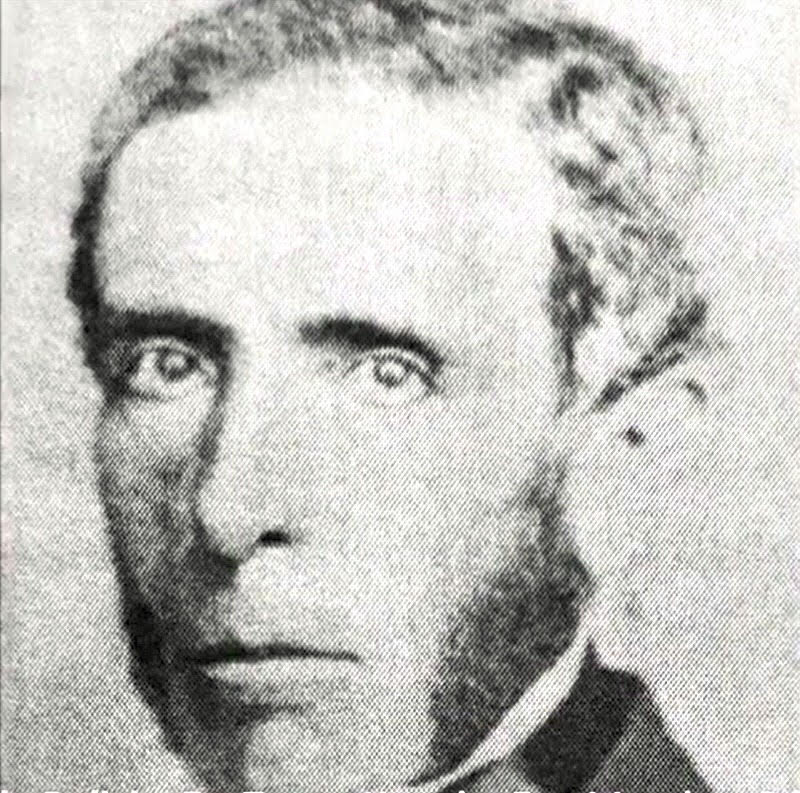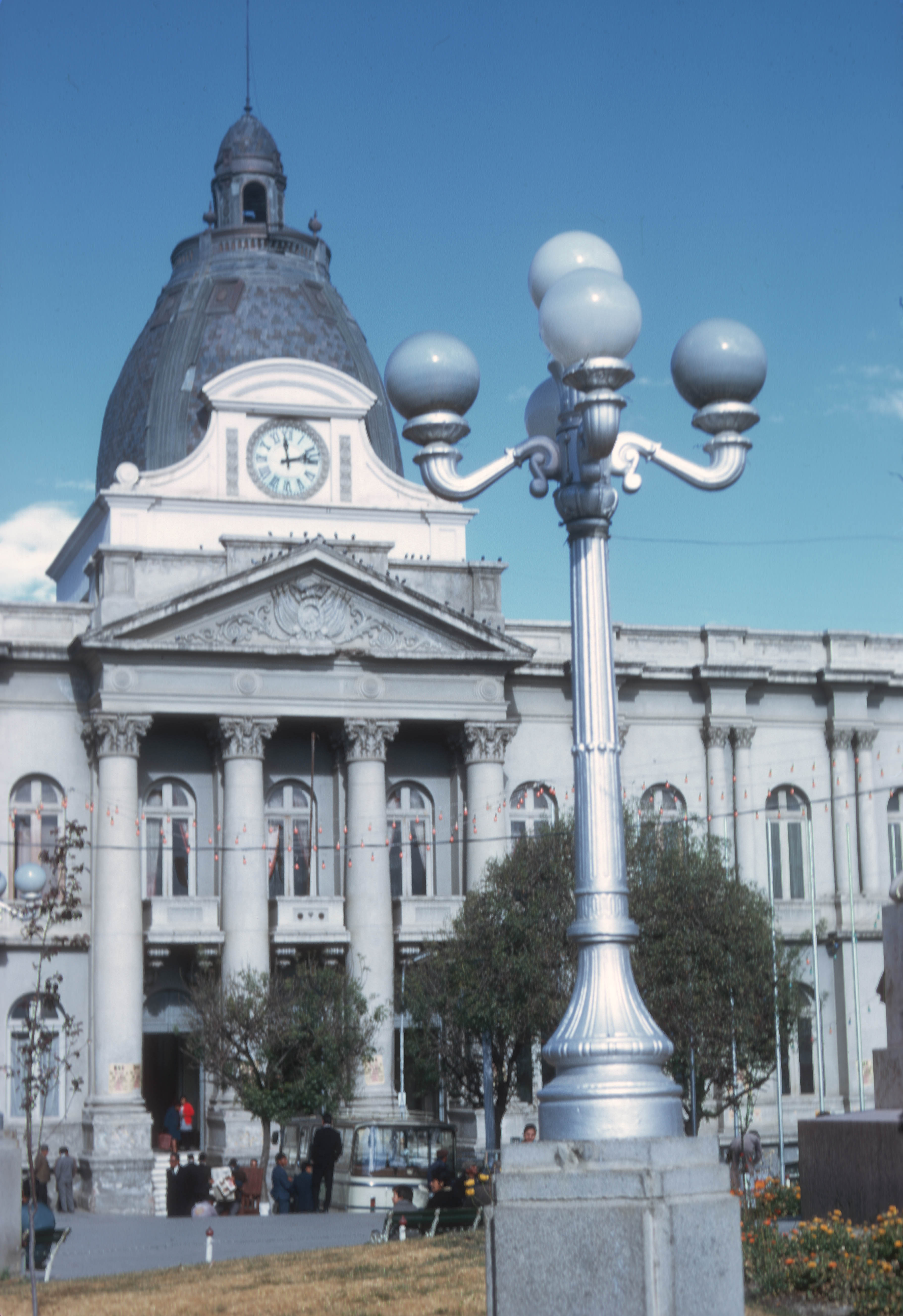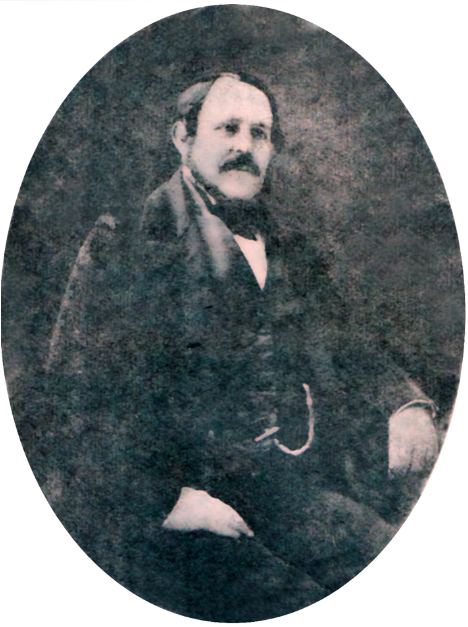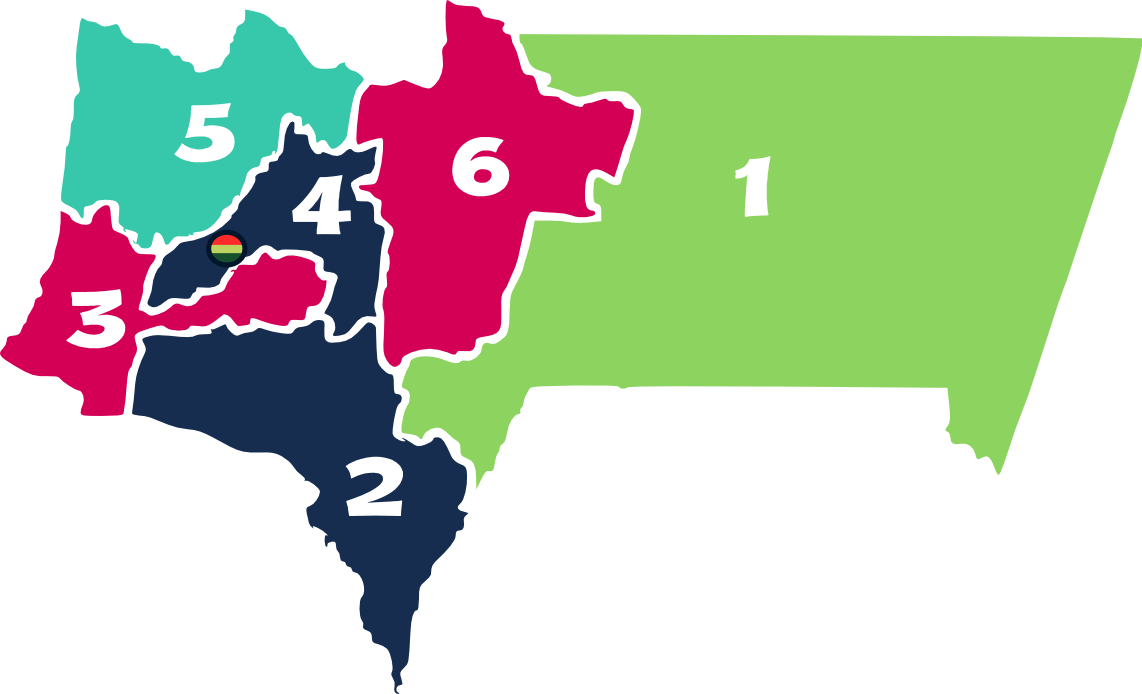|
José María De Achá
José María de Achá Valiente (8 July 1810 – 29 January 1868) was a Bolivian general who served as the 14th president of Bolivia from 1861 to 1864. He served in the battles of the Peru-Bolivian Confederation and conspired against longtime dictator Manuel Isidoro Belzu (1848–55). Later, he was appointed Minister of War in the cabinet of another dictator, José María Linares (1857–61). In that capacity, he led the 1861 coup d'état that toppled Linares. Originally he governed as head of Junta, and then as sole leader of the revolutionary government but became constitutional president via elections. Early military and political activity Achá was born in the city of Cochabamba on July 8, 1810. He enlisted in the Bolivian army, since a military career was promising at the time. He took part in the War of the Confederation and in the Peru-Bolivia War in 1841. He also fought in the Battle of Ingavi under the command of José Ballivián. During his political life, Achá b ... [...More Info...] [...Related Items...] OR: [Wikipedia] [Google] [Baidu] |
Sucre
Sucre () is the Capital city, capital of Bolivia, the capital of the Chuquisaca Department and the List of cities in Bolivia, 6th most populated city in Bolivia. Located in the south-central part of the country, Sucre lies at an elevation of . This relatively high altitude gives the city a subtropical highland climate with cool temperatures year-round. Its pre-Columbian name was Chuquisaca; during the Spanish Empire it was called La Plata. Before the arrival of the Spanish, the city of Chuquisaca had its own autonomy with respect to the Inca Empire (the Charca people, Charcas were the only people that did not pay the ransom for the Inca captive). Today, the region is of predominantly Quechua people, Quechua background, with some Aymara people, Aymara communities and influences. Today Sucre remains a city of major national importance and is an educational and government center, being the location of the Bolivian Supreme Court. Its pleasant climate and low crime rates have made th ... [...More Info...] [...Related Items...] OR: [Wikipedia] [Google] [Baidu] |
Palacio Quemado
The Bolivian Palace of Government, better known as Palacio Quemado (, ''Burnt Palace''), was the official residence of the President of Bolivia from 1853 to 2018 and again briefly from 2019 to 2020. It is located in downtown La Paz on Plaza Murillo, next to the La Paz Cathedral and across from the Bolivian legislature. On 9 August 2018, it was replaced by the Casa Grande del Pueblo as the residence of the president by President Evo Morales. The interim government of Jeanine Áñez briefly reverted to occupying the Palacio Quemado from 2019 until 2020 when the newly elected Luis Arce returned to using the Casa Grande. It now serves as a museum. Its nickname originates from the fact that it was set aflame and burned almost to the ground during an uprising in 1875. It has since been rebuilt and redecorated a number of times, but the name stuck. History The Palacio Quemado earned its nickname of the "Burnt Palace" in 1875, when it was badly damaged during a violent revolution ... [...More Info...] [...Related Items...] OR: [Wikipedia] [Google] [Baidu] |
Plaza Murillo
The Plaza Murillo is the central plaza of the city of La Paz and the open space most connected to the political life of Bolivia. Prominent buildings on the plaza include the Presidential Palace, National Congress of Bolivia, and the Cathedral of La Paz (or more formally, the Cathedral Basilica of Our Lady of Peace, La Paz). It is located in the old town, or ''Casco Viejo'', of the city and is surrounded by Socabaya Street to the west, Ayacucho Street to the east, Comercio Street to the south, and a continuation of Ingavi and Ballivan Streets to the north. Names The Plaza was originally named the Plaza Mayor (''Greatest/Main Plaza'') after its construction. It was later known during the colonial period as the Plaza de Armas. Following independence, it was renamed the July 16 Plaza (Plaza 16 de Julio) on February 3, 1902, in honor of Pedro Murillo Pedro Domingo Murillo (September 17, 1757– January 29, 1810) was a patriot of Upper Peru who played a key role in Bolivian War of ... [...More Info...] [...Related Items...] OR: [Wikipedia] [Google] [Baidu] |
Potosí
Potosí, known as Villa Imperial de Potosí in the colonial period, is the capital city and a municipality of the Department of Potosí in Bolivia. It is one of the highest cities in the world at a nominal . For centuries, it was the location of the Spanish colonial silver mint. A considerable amount of the city's colonial architecture has been preserved in the historic center of the city, which - along with the globally important Cerro Rico de Potosí - are part of a designated UNESCO World Heritage Site. Potosí lies at the foot of the ''Cerro de Potosí'' —sometimes referred to as the ''Cerro Rico'' ("rich mountain")— a mountain popularly conceived of as being "made of" silver ore that dominates the city. The Cerro Rico is the reason for Potosí's historical importance since it was the major supply of silver for the Spanish Empire until Guanajuato in Mexico surpassed it in the 18th century. The silver was taken by llama and mule train to the Pacific coast, shipped north ... [...More Info...] [...Related Items...] OR: [Wikipedia] [Google] [Baidu] |
Jorge Córdova
Jorge Córdova (23 April 1822, in La Paz – 23 October 1861) was a Bolivian general and politician who served as the 12th president of Bolivia from 1855 to 1857. Early life Childhood Jorge Córdova was born on April 23, 1822, in the city of La Paz, which at that time still belonged to the Viceroyalty of Peru. Of unknown parents, unfortunately Córdova had been born into a family of very humble origin belonging to the lower class of Bolivia, which led to days after his birth and while he was still a baby, his parents decided to abandon him, leaving him at the door of a house. belonging to the Asín family, which during that time was a distinguished upper-middle class charitable family from the city of La Paz. Said family from La Paz decided to adopt him and raise him in their home, giving him the name of Jorge and later, when the boy had grown up, he himself decided to take the surname of Córdova voluntarily. He began his primary studies in 1827 at the San Francisco Schoo ... [...More Info...] [...Related Items...] OR: [Wikipedia] [Google] [Baidu] |
Manuel Isidoro Belzu
Manuel Isidoro Belzu Humérez (4 April 1808 – 27 March 1865) was a Bolivian military officer and statesman who served as the 11th president of Bolivia from 1848 to 1855. Under his presidency, the current national anthem of Bolivia and flag of Bolivia were adopted. Early life and education Belzu was born in La Paz to '' mestizo'' parents Gaspar Belzu and Manuela Humérez. He was educated as a youth by Franciscan friars. However, Belzu admired the heroes of the Spanish American wars of independence such as Simón Bolívar and José de San Martín and hoped to emulate them. For this reason, he decided to join Army of Liberation when he was fifteen, in hopes to join the fight against the Spanish in his homeland of Upper Peru. He joined the wars of independence, fighting under Andrés de Santa Cruz at Zepita (1823). After serving as an aide-de-camp to Agustín Gamarra, he left the Peruvian army when the latter entered Bolivia in 1828. Marriage and family Assigned as garrison c ... [...More Info...] [...Related Items...] OR: [Wikipedia] [Google] [Baidu] |
La Paz
La Paz (), officially known as Nuestra Señora de La Paz (Spanish pronunciation: ), is the seat of government of the Bolivia, Plurinational State of Bolivia. With an estimated 816,044 residents as of 2020, La Paz is the List of Bolivian cities by population, third-most populous city in Bolivia. Its metropolitan area, which is formed by La Paz, El Alto, Achocalla Municipality, Achocalla, Viacha Municipality, Viacha, and Mecapaca Municipality, Mecapaca makes up the second most populous urban area in Bolivia, with a population of 2.0 million, after Santa Cruz de la Sierra with a population of 2.3 million. It is also the capital of the La Paz Department, Bolivia, La Paz Department. The city, in west-central Bolivia southeast of Lake Titicaca, is set in a canyon created by the Choqueyapu River. It is in a bowl-like depression, part of the Amazon basin, surrounded by the high mountains of the Altiplano. Overlooking the city is the towering, triple-peaked Illimani. Its peak ... [...More Info...] [...Related Items...] OR: [Wikipedia] [Google] [Baidu] |
Santiago De Cotagaita
Cotagaita is a small town in Bolivia. In 2009 it had an estimated population of 1904. Cotagaita (also: ''Santiago de Cotagaita'') is a country town in the Potosí Department in Bolivia. The village was founded in 1570. Location Cotagaita is central to the municipality of Cotagaita and capital of the province of Nor Chichas. Cotagaita lies at an altitude of 2640 meters on the Río Cotagaita, an inflow of the Rio Pilcomayo. Geography Cotagaita is located in the southern part of the barren plateau of the Bolivian Altiplano. The climate is cool and dry due to the inland location and is characterized by a typical daytime climate, in which the temperature fluctuations between day and night are usually significantly larger than the seasonal fluctuations. The average annual temperature is 15°C and varies only slightly between 11° C in June / July and 18° C in December and January. The annual rainfall is only about 300 mm, with a strong dry season from April to October with mont ... [...More Info...] [...Related Items...] OR: [Wikipedia] [Google] [Baidu] |
Brazil
Brazil ( pt, Brasil; ), officially the Federative Republic of Brazil (Portuguese: ), is the largest country in both South America and Latin America. At and with over 217 million people, Brazil is the world's fifth-largest country by area and the seventh most populous. Its capital is Brasília, and its most populous city is São Paulo. The federation is composed of the union of the 26 States of Brazil, states and the Federal District (Brazil), Federal District. It is the largest country to have Portuguese language, Portuguese as an List of territorial entities where Portuguese is an official language, official language and the only one in the Americas; one of the most Multiculturalism, multicultural and ethnically diverse nations, due to over a century of mass Immigration to Brazil, immigration from around the world; and the most populous Catholic Church by country, Roman Catholic-majority country. Bounded by the Atlantic Ocean on the east, Brazil has a Coastline of Brazi ... [...More Info...] [...Related Items...] OR: [Wikipedia] [Google] [Baidu] |
Rio De Janeiro
Rio de Janeiro ( , , ; literally 'River of January'), or simply Rio, is the capital of the state of the same name, Brazil's third-most populous state, and the second-most populous city in Brazil, after São Paulo. Listed by the GaWC as a beta global city, Rio de Janeiro is the sixth-most populous city in the Americas. Part of the city has been designated as a World Heritage Site, named "Rio de Janeiro: Carioca Landscapes between the Mountain and the Sea", on 1 July 2012 as a Cultural Landscape. Founded in 1565 by the Portuguese, the city was initially the seat of the Captaincy of Rio de Janeiro, a domain of the Portuguese Empire. In 1763, it became the capital of the State of Brazil, a state of the Portuguese Empire. In 1808, when the Portuguese Royal Court moved to Brazil, Rio de Janeiro became the seat of the court of Queen Maria I of Portugal. She subsequently, under the leadership of her son the prince regent João VI of Portugal, raised Brazil to the dignity of a k ... [...More Info...] [...Related Items...] OR: [Wikipedia] [Google] [Baidu] |
José Ballivián
José Ballivián Segurola (5 May 1805 – 6 October 1852) was a Bolivian general during the Peruvian-Bolivian War. He also served as the ninth president of Bolivia from 1841 to 1847. Early life Born in La Paz to wealthy parents, Ballivián had a rather undistinguished military career until his elevation to the post of Commander of the Army in June 1841. He had been a royalist until 1822, but switched sides and joined Lanza's insurrectionist army at the age of 18. His advance in the Bolivian army was unremarkable, although his role was apparently fundamental to the Confederate triumph over Salaverry at the Battle of Socabaya in early 1836. Importantly, he had been a supporter of Santa Cruz in the 1830s. The Battle of Ingavi His golden hour came, and he rose dramatically to the occasion, when at aged 37 and as Bolivian Army chief he united the pro-Velasco and pro-Santa Cruz factions under his command to face-off a massive Peruvian invasion led by President Agustín Gamarra. At ... [...More Info...] [...Related Items...] OR: [Wikipedia] [Google] [Baidu] |
Tarija Department
Tarija () is a department in Bolivia. It is located in south-eastern Bolivia bordering with Argentina to the south and Paraguay to the east. According to the 2012 census, it has a population of 482,196 inhabitants. It has an area of . The city of Tarija is the capital of the department. Subdivisions The department is divided into five provinces and one autonomous region: # Gran Chaco Province (autonomous region) # Aniceto Arce Province # José María Avilés Province # Cercado Province # Eustaquio Méndez Province # Burdett O'Connor Province Notable places in Tarija include: * Villamontes in the department's oil-producing eastern scrubland. Villamontes has recorded the hottest temperature ever in Bolivia, , several times, most recently on 29 October 2010. * Bermejo, a border town adjoining Aguas Blancas, Argentina * Yacuiba, a border town with Argentina. The Department of Tarija is renowned for its mild, pleasant climate, and comprises one of the country's foremost agric ... [...More Info...] [...Related Items...] OR: [Wikipedia] [Google] [Baidu] |

.jpg)


_pg31_General_Belzu.jpg)
.jpg)



